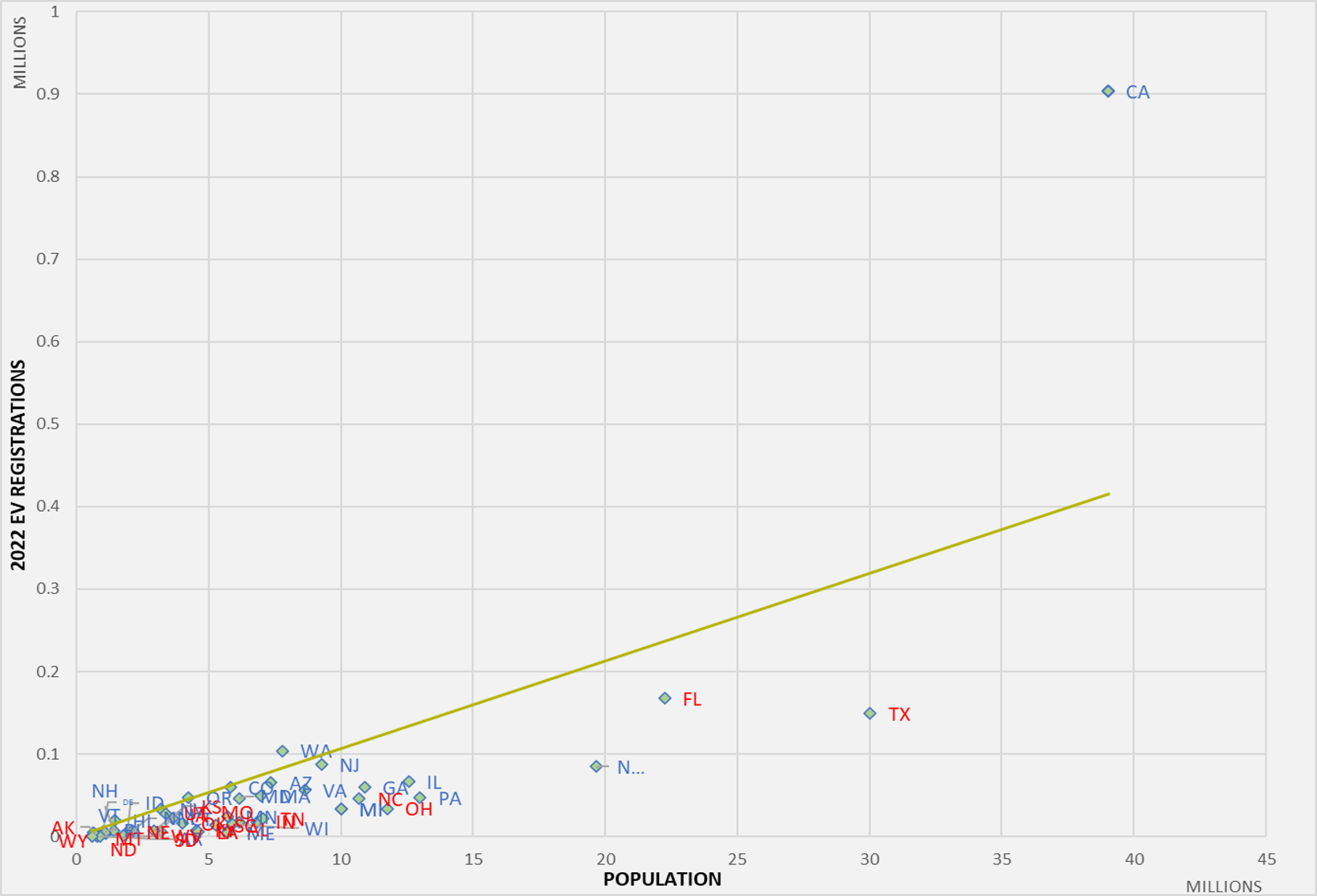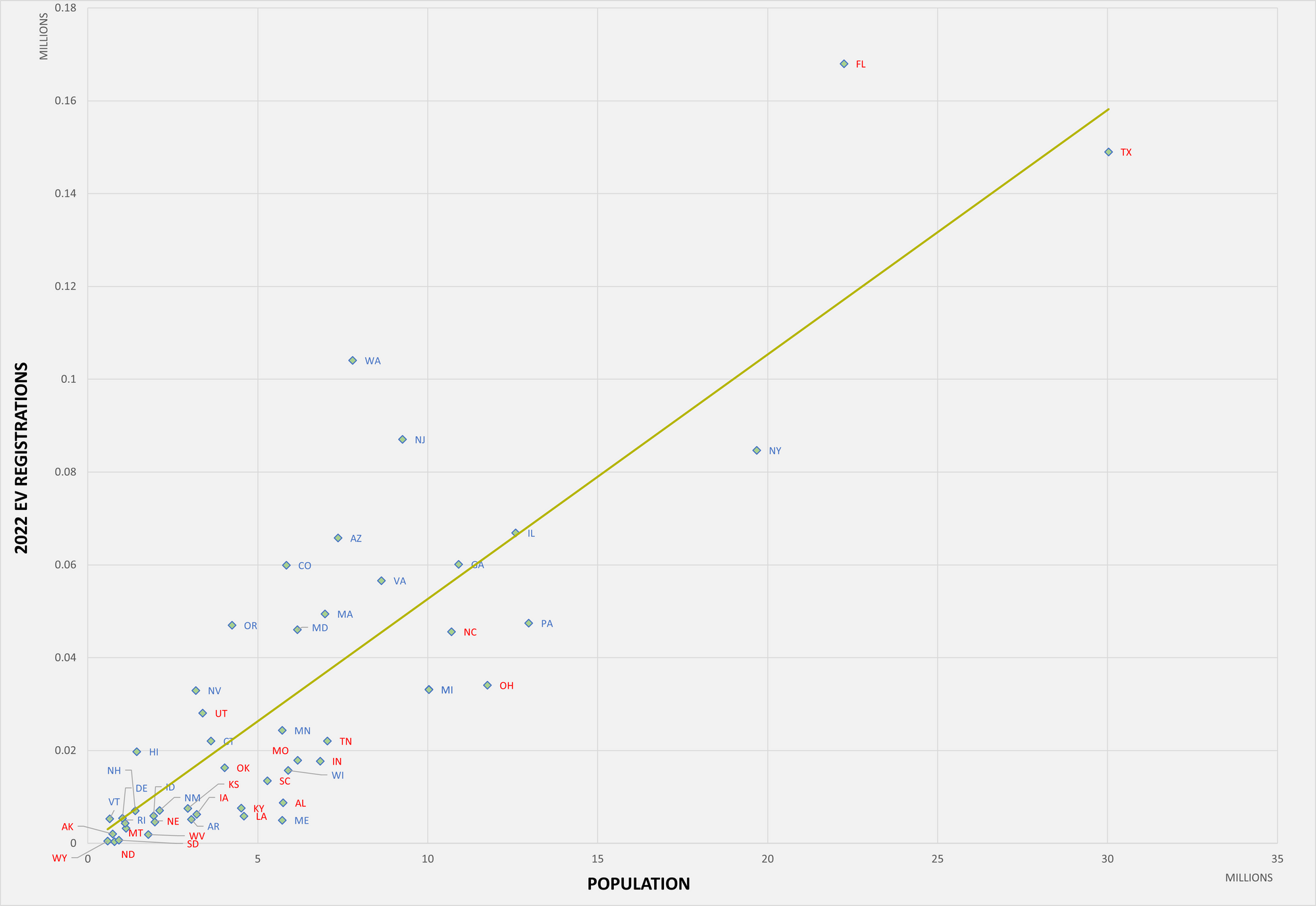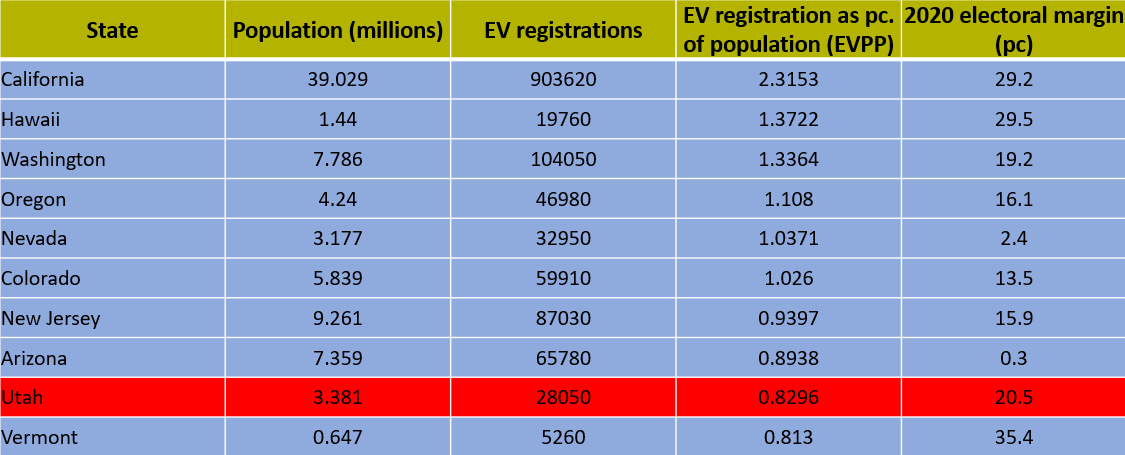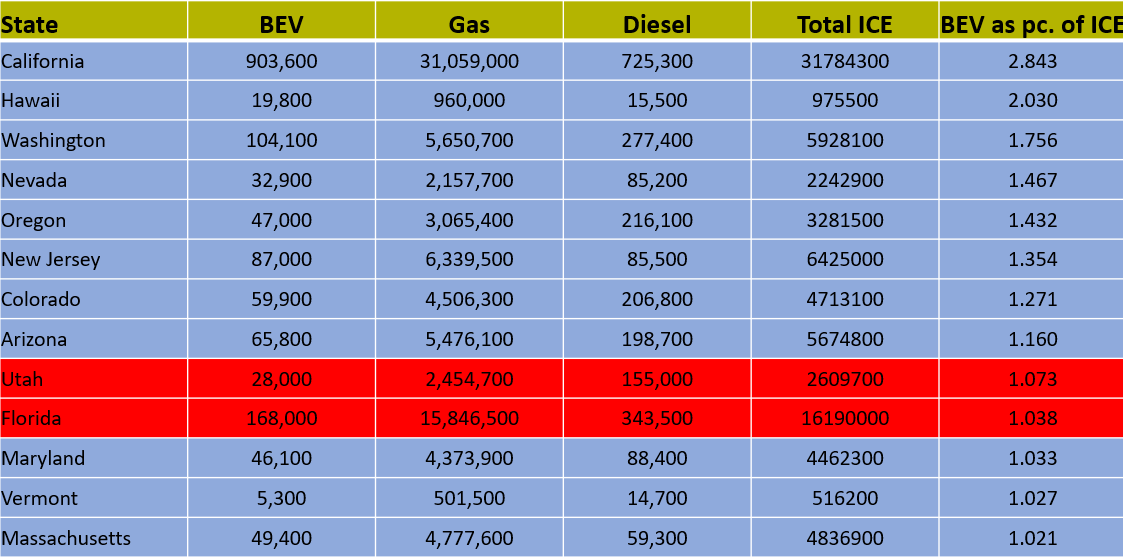Timetable for more affordable Tesla slips further
Musk no longer dangling the possibility of a 2024 rollout of his firm’s new offering
Data shows red states generally lagging blue in appetite to go electric

The US Environmental Protection agency is a Republican creation, created by an executive order by Richard Nixon in 1970, at the start of which year he also signed the National Environmental Policy Act into force. Even a quarter-of-a-century later, in the mid-90s, there was not a great deal of difference between Republican and Democratic attitudes to environmental policy, according to influential New York Times commentator Paul Krugman.
But, since then, and particularly since the election of Democrat Barack Obama as president in 2008, those positions have significantly diverged, with the US Left becoming slightly more favourable towards more environmental policies and its Right “much less supportive”, says Krugman. And he notes that the hostility cannot be explained by belief in free markets and opposition to government intervention, as Republican policy on the environment has consistently gone against those central tenets.
Instead, argues Krugman, “environmental policy has been caught up in the culture war — which is, in turn, largely driven by issues of race and ethnicity”. And this has potentially significant implications for EVs: pace of mobility electrification could be substantially retarded if a significant number of right-leaning Americans reject battery vehicles purely on ideological grounds.
Evidence
Cursory glances at social media suggest that this is already playing out. But does the data back it up?
EV inFocus has compared statistics from the US Department of Energy recording the total number of BEVs registered in each state at the end of 2022 against which presidential candidate won that state’s electoral college votes in 2020. Plotting BEVs registered in each state in 2022 against population gives a mean average trend line of BEV registration per capita.
But there is a particular quirk in the data. Despite having the biggest population of any state, Californians are still adopting BEVs far above the national per capita average, a measure on which it, in turn, has outsized influence (see Fig.1).

Including California, only three other states — Washington, Oregon and Hawaii — have BEV registrations above the per capita average, i.e. have more BEVs registered than their population would suggest based on the national average. But that very low number of above-average states is purely because California both makes up such a large proportion of above-average registrations, and drags the overall average higher.
If we exclude California, several interesting results play out. For one thing, significantly more states are above an ex-California per capita average, 17 compared to four (see Fig. 2). Of these 17, 15 are blue states, or 88.2pc of the total. But the two red states are both notable.

Florida, a red state with the third largest population in the nation, is now significantly above the trend line, and in fact has BEV registrations as percentage of population (BEVPP) that ranks 11th overall (10th excluding California). The state’s 2020 margin was 3.4pc in favour of incumbent president Donald Trump and has been the fulcrum of much right-leaning cultural legislation this year.
In recent weeks, Republican Governor Ron DeSantis vetoed a bill that would have required the state to conduct a total cost of ownership (TCO) analysis to guide its purchase of fleet vehicles. According to lobby group Electrification Coalition, the measure could have “save[d] the state of Florida approximately $277mn over 15 years by fully transitioning the fleet to comparative electric alternatives”.
The other red state above the national average is Utah — the only Republican state in the BEVPP top ten (see Fig.3). Yet it was won by Trump in 2020 by a margin of 20.5pc, making it the tenth safest Republican state. So Utah is not a marginal state by any stretch, but is still relatively high in terms of BEV adoption.

Arizona was won by Biden in 2020 with the slimmest margin of victory in the whole country. It therefore has a higher proportion of Republican voters than any other blue state, and — with a population in the 28th percentile — its overall voter numbers are not small. It has historically swung between both parties and had been won by Trump in 2016. It nevertheless remains in the top ten states on the BEVPP measure.
In fact, only four of the ten safest Democrat states (measured by 2020 margin for Joe Biden), fall in the BEVPP top ten, albeit three others had Biden wins of more than 13pc. The big Democratic majority states absent from the BEVPP top ten include Massachusetts, Maryland, New York, Rhode Island, Connecticut and Delaware.
Other traditional Democratic strongholds like Maine and New Hampshire are also below the trend line. Predominantly rural Maine has the tenth fewest EV registrations of any state, and only a 0.0873 EVPP, a reminder that how vehicles are used is a factor in EV adoption as well as political colour.
New York could also be considered an outlier, given that New York City has unusual car ownership rates. According to publisher Forbes, citing US census data, the city had in 2021 the lowest rate across any US metro area of households owning at least one car at 69.6pc, when the next lowest was 87pc.
But, according to the US Department of Energy 2022 data, the state as a whole ranks sixth nationally in terms of average number of light duty vehicles (LDVs) owned per capita. This points to significantly higher LDV ownership in the state’s more rural, less blue areas, which may be a factor in overall lower BEV penetration.
New York also serves as a reminder that not every person in a state will own a car, whether it is ICE, hybrid or electric. Statistics about population take into account children, for example, not to mention non-car-owning adults. And there are also different levels of multiple car ownership in and across states.
As such, another potentially useful metric for EV adoption is BEV registrations as a proportion of gasoline and diesel LDVs (see Fig.4). Just 13 states have BEV registrations that have reached more than 1pc of combined ICE vehicles.

Again, the outlier two red states are Utah and Florida. But a couple of the strongly Democratic states ‘missing’ from the top ten when accounting purely on a BEVPP basis — Maryland and Massachussetts — appear in this list, suggesting that their relatively lower EV adoption per capita may in part be down to a lower rate of car ownership overall.
Insider Focus LTD (Company #14789403)